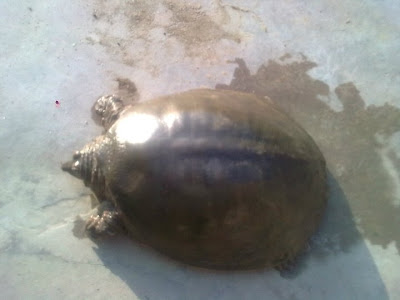My 12" Flap shell turtle flap shelled turtle from beneath It is a very common fresh water turtle found in India and it can be found fairly easily in ponds, steams, marshes, near our house during rainy season and in fish markets. they have a soft leathery type of shell and they are called as flap shell because they have flaps on the plastron above their legs which cover their legs when they retract in the shell. They have a snout which can be seen clearly in the picture above. its size ranges from about 240 to 370 mm in length. Diet: It is omnivorous means it eats everything ranging from snails, frogs, fishes, shrimps, aquatic plants, flowers, fruits, plant leaves etc. mine loved aquatic plant (you can buy them from fish store, they are available now a days for setting up planted aquariums, try to get cheap ones or you can directly get them from outside ponds and marshes if you know any), you can also try to make them eat artificial turtle food but i don...




.jpg)